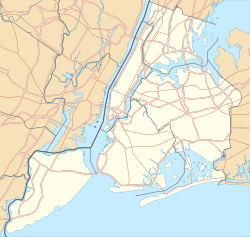| Rat Rock | |
|---|---|
| Umpire Rock | |
 East side of the rock | |
| Location | Central Park, Manhattan, New York City, New York, U.S. |
| Coordinates | 40°46′10″N73°58′40″W / 40.769361°N 73.977655°W |
| Climbing type | Bouldering |
| Height | 25 feet (7.6 m) |
| Rock type | Schist |
| Ownership | Department of Parks and Recreation |
| Access | Public |
Rat Rock, also known as Umpire Rock, is an outcrop of Manhattan schist which protrudes from the bedrock in Central Park, Manhattan, New York City.



